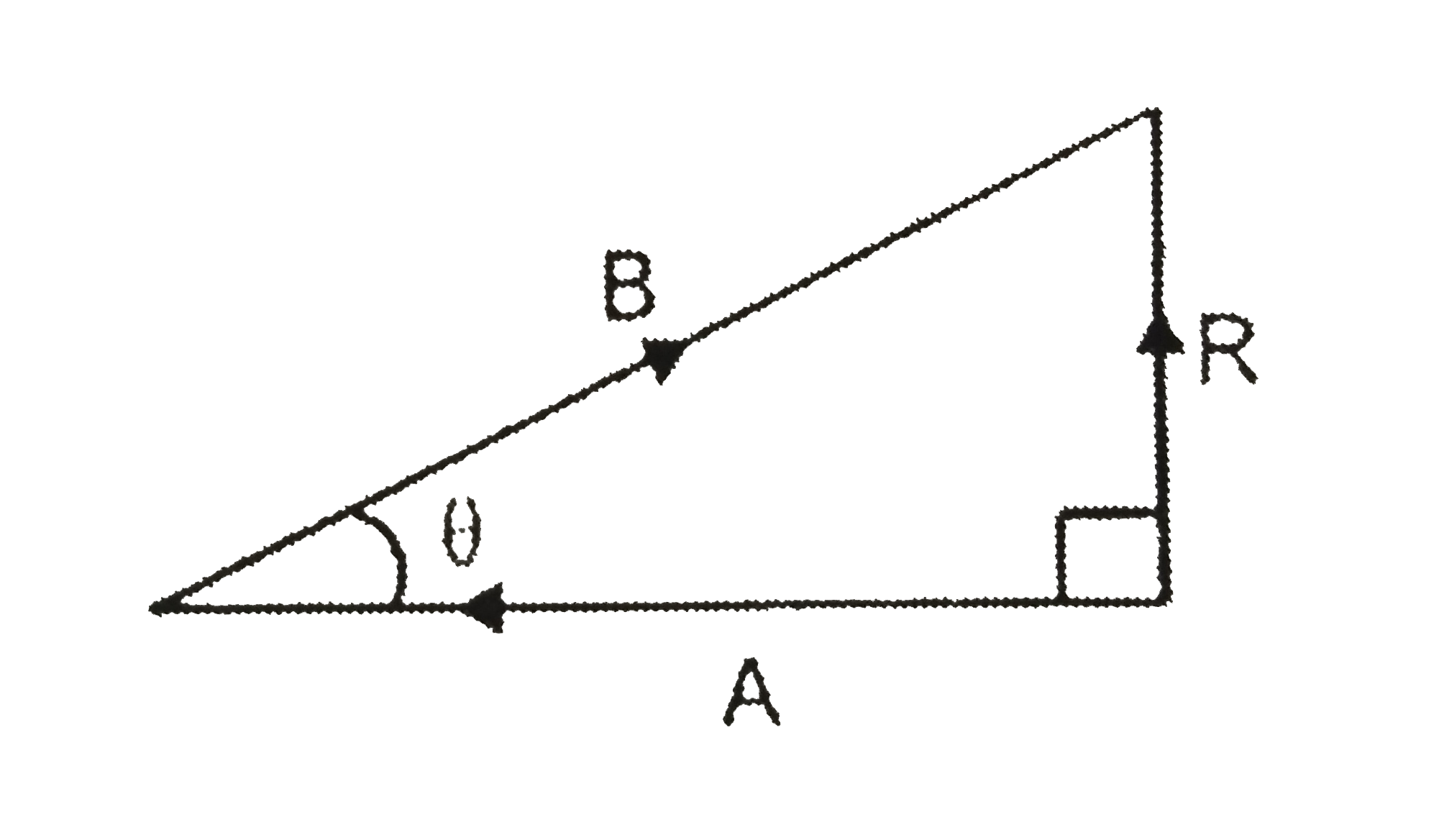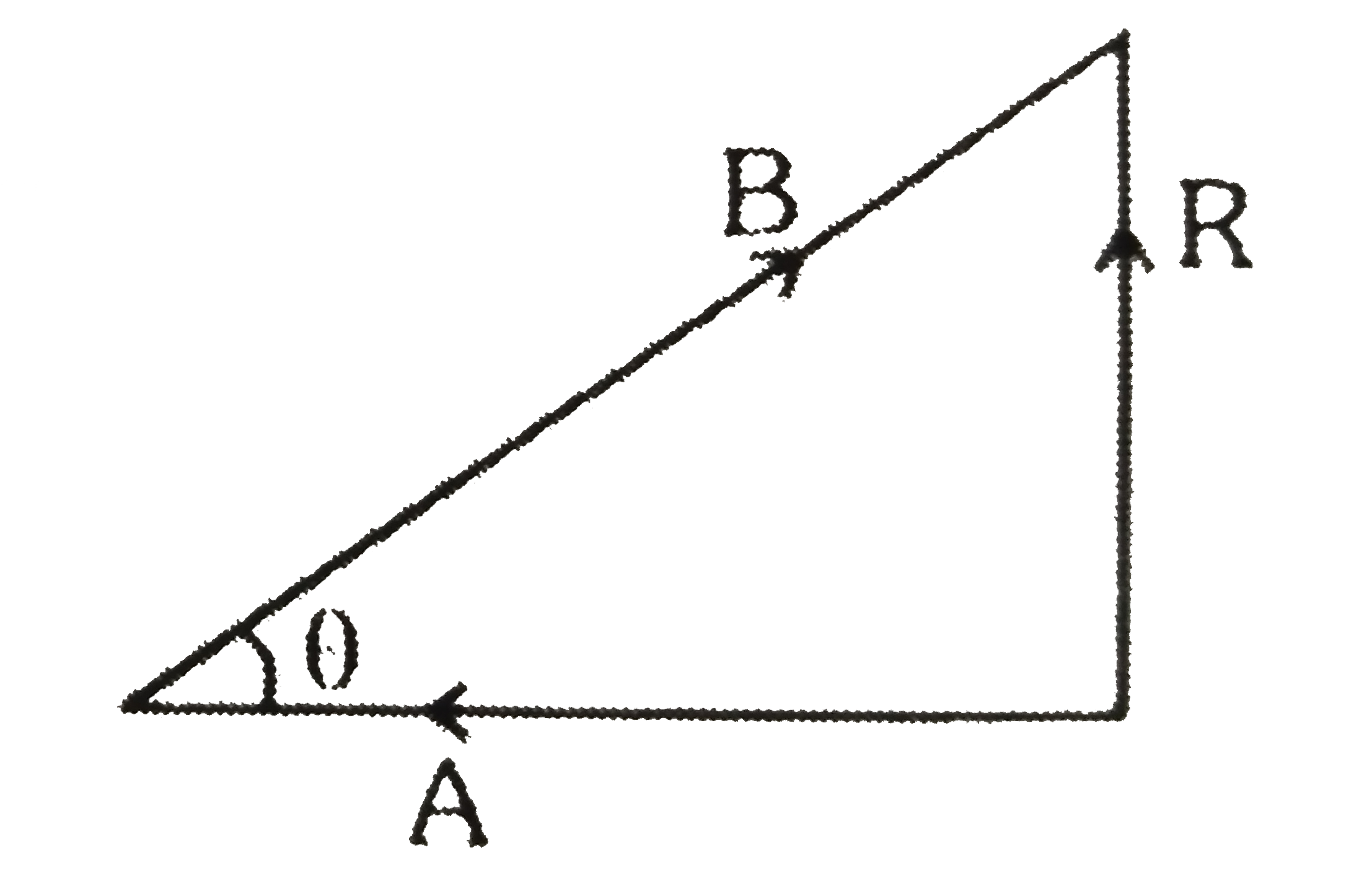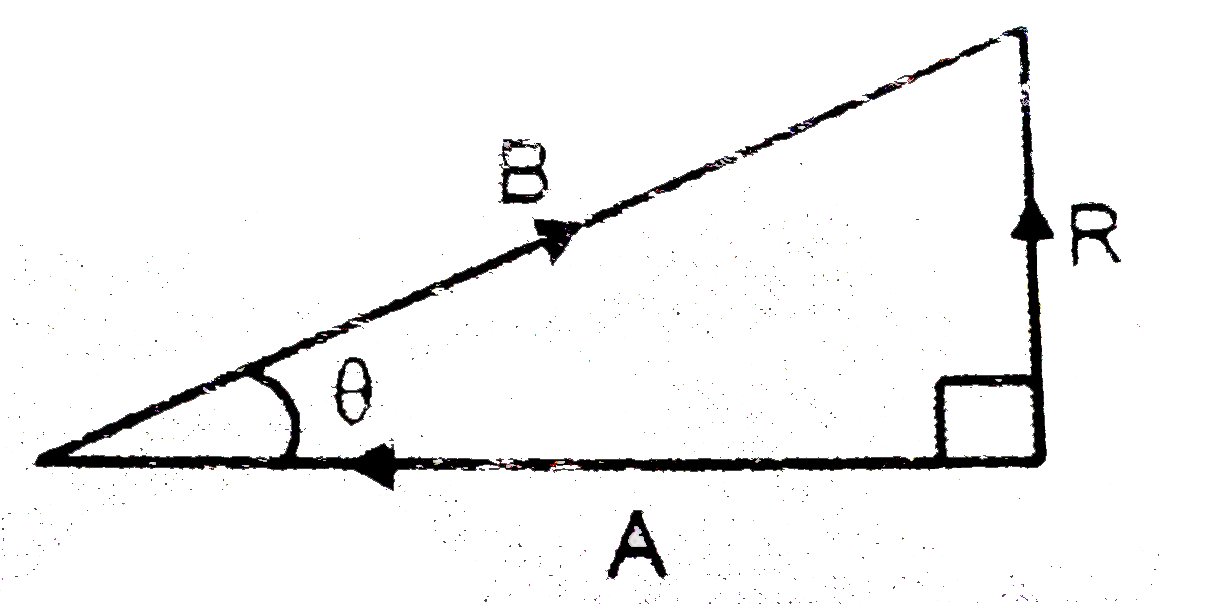In vector diagram shown in figure where (→R) is the resultant of vectors (→A)and(→B).

If R=B√2, then value of angle θ is :
A
30∘
B
45∘
C
60∘
D
75∘
Video Solution
Text Solution
The correct Answer is:B

sinθ=RB=B/√2B=1√2⇒θ=45∘
|
Topper's Solved these Questions
- BASIC MATHEMATICS USED IN PHYSICS &VECTORS Book:ALLENChapter:BASIC MATHEMATICS USED IN PHYSICS &VECTORS Exercise:RESOLUTION OF VECTOR
Explore 8 Videos
- BASIC MATHEMATICS USED IN PHYSICS &VECTORS Book:ALLENChapter:BASIC MATHEMATICS USED IN PHYSICS &VECTORS Exercise:DOT PRODUCT
Explore 20 Videos
- BASIC MATHEMATICS USED IN PHYSICS &VECTORS Book:ALLENChapter:BASIC MATHEMATICS USED IN PHYSICS &VECTORS Exercise:DEFINITION & TYPES OF VECTOR
Explore 6 Videos
- CENTRE OF MASSBook:ALLENChapter:CENTRE OF MASSExercise:EXERCISE-V B
Explore 19 Videos
Similar Questions
Knowledge Check
In vector diagram shown in figure where (→R) is the resultant of vectors (→A) and (→B). If R=B√2, the value of angle θ is :
 A30∘B45∘C60∘D75∘
A30∘B45∘C60∘D75∘→R is the resultant of →A and →B . →R is inclined to →A at angle theat1 and to →B at angle θ2, then :
Aθ1<θ2Bθ1<θ2ifA>BCθ1<θ2ifA<BDθ1<θ2ifA=BThe vector sum of two vectors →Aand→B is maximum , then the angle θ between two vector is
A0∘B30∘C45∘D60∘
Vector →R is the resultant of the vetors →Aand→B. Ratio of maximum value of ∣∣→R∣∣ to the minimum value of ∣∣→R∣∣ is 31. The ∣∣→A∣∣∣∣→B∣∣ may be equal to-
View SolutionIf the angle between the vectors →Aand→B is θ, the value of the product (→B×→A)⋅→A is equal to
View SolutionIf the angle between the vectors →Aand→B is θ, the value of the product (→B×→A)⋅→A is equal to
View SolutionLet θ be the angle between vectors →Aand→B . Which of the following figures correctly represent the angle θ ?
View Solutionif→aand→b are unit vectors such that →a.→b=cosθ , then the value of ∣∣→a+→b∣∣, is
View Solution
